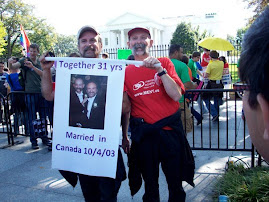JURIST - Forum: Same-Sex Marriage/Same-Sex Family
Same-Sex Marriage/Same-Sex Family
JURIST Guest Columnist Douglas NeJaime of UCLA School of Law says that the California same-sex marriage ruling is not merely about the right to marry the person one loves, but it is also about accommodating the demographic reality of lesbians and gay men who commit to one another, raise children, and form families...
--------------------------------------------------------------------------------
The California Supreme Court recently became the second state high court to extend marriage to same-sex couples. Although the court reached the same result as the Massachusetts Supreme Judicial Court, it did so based on radically different reasoning. While the Massachusetts court conceptualized marriage in terms of self-fulfillment, the California court focused on the relationships formed through marriage, positioning marriage as about others.
In its 2003 landmark decision, the Massachusetts court focused on the individuals in the relationship, making marriage about the self. As the court put it, “[b]ecause it fulfills yearnings for security, safe haven, and connection that express our common humanity, civil marriage is an esteemed institution, and the decision whether and whom to marry is among life’s momentous acts of self-definition.”
The California court, on the other hand, concentrated on the familial relationships embodied by marriage and society’s interest in those relationships. The court carefully identified the “substantive right of two adults who share a loving relationship to join together to establish an officially recognized family of their own – and, if the couple chooses, to raise children within that family.” To the court, the issue before it was not merely one about marriage – the relationship between two adults seeking self-fulfillment – but was also, and more centrally, one about family – the supportive kinship networks among adults and children. Indeed, Chief Justice George’s majority opinion used the word “family” almost 150 times. The claim to marriage by lesbians and gay men had transformed from the individualistic, self-defining right that carried the day in Massachusetts in 2003 to the more far-reaching, communitarian, family-based right that prevailed in California in 2008.
What had changed? Rhetoric and reality.
The Massachusetts court rejected social conservative arguments based on notions of the optimal husband-wife, father-mother household. The California court went further, actually reconfiguring those arguments to support same-sex couples. While social conservative groups in the California litigation argued in favor of restrictions on marriage based on the significance of families and children, this exact rationale served as the basis for the court’s decision against the marriage restriction. “Family values,” it seems, have been neutered, and the rhetoric of “family values” has switched sides.
The court’s new focus on the family was underscored by a novel argument made by the state of California. The state, including the Attorney General and the Governor, attempted to divest the name “marriage” of its symbolic qualities, arguing that no difference exists between marriage and domestic partnership. In fact, the state argued that California could do away with the term “marriage” altogether, stripping it from the relationships of different-sex couples. The court, however, rejected the state’s arguments, agreeing instead with both the gay rights groups and the social conservative groups as to the importance of the status of marriage and its significance for family relationships. The state, it seems, was missing the point – family.
The court comprehensively reconfigured the notion of family so as not merely to accommodate but actually celebrate the relationships formed between same-sex couples and between those couples and their children. First, the court established that when two people commit to one another and rely on each other for mutual support, they form a family that is socially vital and worthy of official recognition. The court explained that a core element of the fundamental right to marry “is the right of same-sex couples to have their official family relationship accorded the same dignity, respect, and stature as that accorded to all other officially recognized family relationships.” By forming relationships characterized by mutual commitment and support, same-sex couples are serving as productive members of society and furthering the societal interest in family stability.
Next, the court situated parenting and children – significant components of “family values” discourse – as gay-positive. As the court declared, society “has an overriding interest in the welfare of children, and the role marriage plays in facilitating a stable family setting in which children may be raised by two loving parents unquestionably furthers the welfare of children and society.” The mother-father family had become the two-parent family, and children had become central players in the families of same-sex couples.
At the same time that gay rights advocates and the court itself appropriated “family values” discourse to the benefit of same-sex couples, the rhetorical move reflects a more grounded factual recognition of the lives of many lesbians and gay men. They form families, they raise children, and they will continue to do so regardless of the outcome of marriage litigation. As Chief Justice George pointed out in his opinion, the Williams Institute has documented that at the time of the 2000 census, same-sex couples in California were raising more than 70,000 children. Indeed, the Chief Justice noted that, according to the Williams Institute, almost 30% of same-sex couples in California were raising children.
The picture of the gay and lesbian population documented by the Williams Institute, and recognized by the court, is a far cry from caricatured images of single, swinging gays living in urban enclaves, far from children and respectable families. The court’s decision is not merely about the right to marry the person whom one loves, but it is also about a realistic, practical accommodation of the demographic reality of the lives of lesbians and gay men, who are committing to one another, raising children, and forming families.
Douglas NeJaime is the Williams Institute Law Teaching Fellow at UCLA School of Law
Wednesday, May 28, 2008
Same-Sex Marriage/Same-Sex Family
Subscribe to:
Post Comments (Atom)


No comments:
Post a Comment